StopNATO
QDR: New U.S. Air-Sea Battle Plan Focuses On China, Iran
Business Week
Bloomberg News
February 1, 2010
China, Iran Prompt U.S. Air-Sea Battle Plan in Strategy Review
By Viola Gienger and Tony Capaccio
-The joint Air Force-Navy plan would combine the strengths of each service to
conduct long-range strikes that could utilize a new generation of bombers, a new
cruise missile and drones launched from aircraft carriers.
-“This is truly a wartime QDR,” Defense Secretary Robert Gates wrote in a
cover letter for the report.
-“In the mid- to long-term, U.S. military forces must plan and prepare to
prevail in a broad range of operations that may occur in multiple theaters in
overlapping time frames,” the Defense Department says in the review.
“This includes maintaining the ability to prevail against two capable
nation-state aggressors.”
-[T]he review calls for “a more widely distributed” and flexible U.S.
presence in Asia that relies more on allies. Partners would include Australia,
Thailand, the Philippines, Singapore, Indonesia, Malaysia and Vietnam.
-The Pentagon has about 400,000 U.S. military personnel stationed overseas,
either in war zones or elsewhere. The review emphasizes “taking care of our
people” serving in multiple long deployments that take a “significant
toll” on them and their families.
The U.S. military is drawing up a new air-sea battle plan in response to threats
such as China’s persistent military build-up and Iran’s possession of
advanced weapons, according to the Pentagon’s latest strategy review.
The Air Force and Navy are seeking more effective ways of ensuring continued
access to the western Pacific...according to the Quadrennial Defense Review to
be released later today.
The joint Air Force-Navy plan would combine the strengths of each service to
conduct long-range strikes that could utilize a new generation of bombers, a new
cruise missile and drones launched from aircraft carriers. The Navy also is
increasing funding to develop an unmanned underwater vehicle, according to the
report.
The battle plan is among a range of new initiatives outlined in the review,
which is conducted every four years to revise U.S. military strategy for the
coming decade or more. The new report places top priority on the fights in
Afghanistan and Iraq and against terrorist threats elsewhere, while also
preparing for future threats.
“This is truly a wartime QDR,” Defense Secretary Robert Gates wrote in a
cover letter for the report. “For the first time, it places the current
conflicts at the top of our budgeting, policy and program priorities.”
Two-War Capability
The review deemphasizes but does not abandon the Pentagon’s doctrine that
calls for the military to be able to fight two major wars nearly simultaneously.
It acknowledges this mission but says planning should focus more closely on
other scenarios, such as irregular warfare including conflicts involving
insurgents or drug traffickers and even humanitarian disasters.
“In the mid- to long-term, U.S. military forces must plan and prepare to
prevail in a broad range of operations that may occur in multiple theaters in
overlapping time frames,” the Defense Department says in the review.
“This includes maintaining the ability to prevail against two capable
nation-state aggressors,” it states.
Alluding to China in his cover letter, Gates cites longer- term threats such as
“the military modernization programs of other countries.” He also hints at
dangers such as al-Qaeda in referring to “non-state groups developing more
cunning and destructive means to attack the United States and our allies and
partners.”
Tensions With China
U.S. officials have often called on their Chinese counterparts to provide
explanations and assurances that their moves are purely defensive. The two
countries resumed military talks last June, then China halted visits again over
the Defense Department’s Jan. 29 announcement of a new arms sale to Taiwan.
China is developing and deploying “large numbers” of advanced missiles, new
attack submarines, long-range air defense systems and capabilities to wage
electronic warfare and target computer systems, according to the report, which
echoes an assessment of China’s military power issued almost a year ago.
China’s refusal to provide adequate assurances of its intentions raises “a
number of legitimate questions regarding its long-term intentions,” the
Pentagon says in the review.
Citing “more complex” security conditions in the region, including North
Korea and terrorist threats in Southeast Asia, the review calls for “a more
widely distributed” and flexible U.S. presence in Asia that relies more on
allies. Partners would include Australia, Thailand, the Philippines, Singapore,
Indonesia, Malaysia and Vietnam.
Threat From Iran
In the Middle East, Iran is fielding small attack boats in the Persian Gulf, a
development that U.S. officials have cited in the past. That compounds the
threat to naval operations from the acquisition by Iran and other nations of
weapons such as quiet submarines and advanced cruise missiles that can target
ships, according to the report.
Iran also has provided drones and shoulder-fired missiles to the Islamic
militant group Hezbollah in Lebanon, and Russia and other nations have
contributed to the spread of surface-to- air missiles, the department said.
Among the solutions proposed are more ways to deploy U.S. forces abroad, such as
naval assets, “in regions facing new challenges.” Existing bases also need
to be either hardened to protect against potential attacks or reinforced with
back-up locations or by dispersing them in multiple places, the department
concluded.
The Pentagon has about 400,000 U.S. military personnel stationed overseas,
either in war zones or elsewhere. The review emphasizes “taking care of our
people” serving in multiple long deployments that take a “significant
toll” on them and their families.
Other Concerns
In addition to supporting existing wars, the Quadrennial review emphasizes the
need for more unmanned aircraft, intelligence, special forces, helicopters and
long-range strike capabilities as well as skills such as foreign languages and
training of foreign military forces.
The U.S. military, especially the Navy and Air Force, also should find better
and faster ways to strengthen the defense systems of foreign allies and partners
as needed, the Pentagon said.
The Pentagon should continue to maintain a nuclear arsenal as a “core
mission” until “such time as the administration’s goal of a world free of
nuclear weapons is achieved,” according to the report.
The potential threat of cyber attacks and the need to conduct “high-tempo
operations” will require more expertise in that field and centralized command
of cyber operations, the department said.
-Editor: Bill Schmick
===========================
Stop NATO
http://groups.yahoo.com/group/stopnato
Blog site:
http://rickrozoff.wordpress.com/
Tuesday, February 2, 2010
Text Fwd: QDR: New U.S. Air-Sea Battle Plan Focuses On China, Iran
Subscribe to:
Post Comments (Atom)

![[URGENT PLEA: In Update] EMERGENCY in GANGJEONG Since AUG. 24, 2011](http://2.bp.blogspot.com/-3iz8k-USXVY/TlmRYhhIYtI/AAAAAAAAL2c/9dbF85ZIkIs/s227/jejusit.jpg)
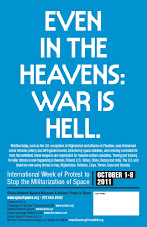
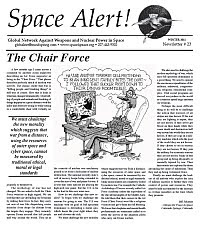

![[Solidarity from Japan for the Jeju] 253 individuals and 16 groups/organizations](http://2.bp.blogspot.com/_gnM5QlRx-4c/TR_YeNVE1yI/AAAAAAAAHWQ/ARyf6oQN0S0/S227/jeju_12_10j.jpg)
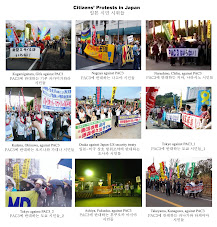
![[Translation] Korean organizations' statement: Immediately cancel the joint ROK-US drill Nov 26](http://2.bp.blogspot.com/_gnM5QlRx-4c/TPOE8VKXHFI/AAAAAAAAGlM/8lryt-8sFjc/S227/1.jpg)
![HOT! [Hankyoreh Hani TV] Beneath the Surface: the investigation into the sinking of the Cheonan](http://4.bp.blogspot.com/_gnM5QlRx-4c/TOI83qht8aI/AAAAAAAAGXU/22SW6Q5ntV8/S227/HaniTV%2BCheonan.gif)

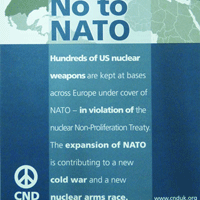

![[Translation]Statement against illegal inspection and unjust lay-off by the Kunsan USAFK!(Nov_2010)](http://4.bp.blogspot.com/_gnM5QlRx-4c/TOPLsVkZMqI/AAAAAAAAGZs/3YnnckIyAaY/S227/gunsan%2Bprotest.gif)
![[Translation] Korean organizations' statement against dispatching special force to the UAE on Nov.](http://4.bp.blogspot.com/_gnM5QlRx-4c/TOP95zHXlCI/AAAAAAAAGak/E0Ug1XtUFfM/S227/antiwarpeace.jpg)
![[Translation] Stop, Joining MD!: South Korean activists' statement and writing on Oct. 25, 2010](http://3.bp.blogspot.com/_gnM5QlRx-4c/TOP7Es4_2sI/AAAAAAAAGac/eWVMPD-U4p0/S227/StopMD.jpg)
![[In Update] People First, NO G-20 (Nov. 6 to 12, Korea)](http://2.bp.blogspot.com/_gnM5QlRx-4c/TJd53XBzHlI/AAAAAAAAFQo/ldO9JPE3eqo/S227/left21_G20.jpg)
![[International Petition] Stop US helipad plan in Okinawa to save great nature](http://4.bp.blogspot.com/_gnM5QlRx-4c/TKC2AHRNzBI/AAAAAAAAFUo/yGWXODTw_uM/S227/yanbaru_w.jpg)

![[Global Network] against the first launch of Quasi-Zenith Satellite, Japan, on Sept. 11, 2010](http://4.bp.blogspot.com/_gnM5QlRx-4c/TIowa1boy4I/AAAAAAAAFDI/82rAi98uq-c/S227/Qzss-45-0_09.jpg)

![[In update] Some collections on the Koreans’ protests against the sanction & war on Iran](http://4.bp.blogspot.com/_gnM5QlRx-4c/TJMvke6t8zI/AAAAAAAAFO4/tamQ8LUnOOA/S227/No+Sanction+on+Iran.jpg)
![[Three International Petitions] to End the Korean war and peace treaty(or peace resolution)](http://1.bp.blogspot.com/_gnM5QlRx-4c/THef7bzWxYI/AAAAAAAAE44/wwdzSDfYhdw/S227/border.jpg)
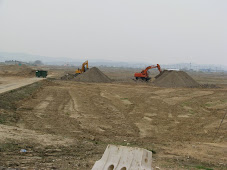


![[Collection of Documents] No Base Learning and Solidarity Program_Korea(June 14 to 20, 2010)](http://1.bp.blogspot.com/_gnM5QlRx-4c/TCTvVuN8NeI/AAAAAAAAEek/8vBJVaHdk10/S227/No-Base-banner.jpg)
![Site Fwd:[John Hines] A U.S. Debate coach’s research trip on the Issues of Korea](http://3.bp.blogspot.com/_gnM5QlRx-4c/TINCO36mzzI/AAAAAAAAE_w/Rds12NcBOXM/S227/Jeju-Peace-Tour.jpg)


![[News Update] Struggle Against the Jeju Naval Base since Jan. 18, 2010](http://1.bp.blogspot.com/_gnM5QlRx-4c/S1vvWaP25uI/AAAAAAAACkg/QvpW1tgOlKM/S226/scrum1.jpg)


![[Urgent] Please spread the Letter!: There was no Explosion! There was no Torpedo! (May 26, 2010)](http://4.bp.blogspot.com/_gnM5QlRx-4c/S_9JmsKEU7I/AAAAAAAAEP8/sAWjSPqxzUI/S227/grounded.jpg)
![Text Fwd: [Stephen Gowans]The sinking of the Cheonan: Another Gulf of Tonkin incident](http://1.bp.blogspot.com/_gnM5QlRx-4c/TAL_FtYKQ-I/AAAAAAAAERE/NEEMijiEcRM/S227/lee-myung-bak.jpg)
![[Japan Focus]Politics in Command: The "International" Investigation into the Sinking of the Cheonan](http://1.bp.blogspot.com/_gnM5QlRx-4c/TBMJ2syJzyI/AAAAAAAAEZU/uTYZccU5vyk/S227/wen_jiabao_and_lee_myungbak.png)
![[Japan Focus] Who Sank the SK Warship Cheonan? A New Stage in the US-Korean War and US-China](http://2.bp.blogspot.com/_gnM5QlRx-4c/S_iQ2vE5ZpI/AAAAAAAAEOU/Oo1SPcAe8FE/S227/buoy_map.gif)
![[Updated on 12/13/10] [Translation Project] Overseas Proofs on the Damages by the Military Bases](http://4.bp.blogspot.com/_gnM5QlRx-4c/S-qSj59gPLI/AAAAAAAAEGM/mwjlFtPE-jo/S227/missile.jpg)
![[International Petition] Close the Bases in Okinawa](http://3.bp.blogspot.com/_gnM5QlRx-4c/S8-z3DYNwNI/AAAAAAAADo4/OswTSchK09M/S227/2.jpg)

![[In Update]Blog Collection: No Korean Troops in Afghanistan](http://4.bp.blogspot.com/_gnM5QlRx-4c/SwnlLD9IewI/AAAAAAAAB9E/oUPssnpNidA/S226/No-Troops-to--Afghanistan.jpg)


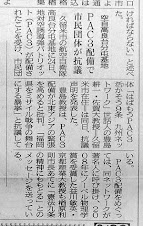

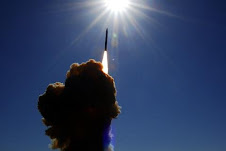






No comments:
Post a Comment